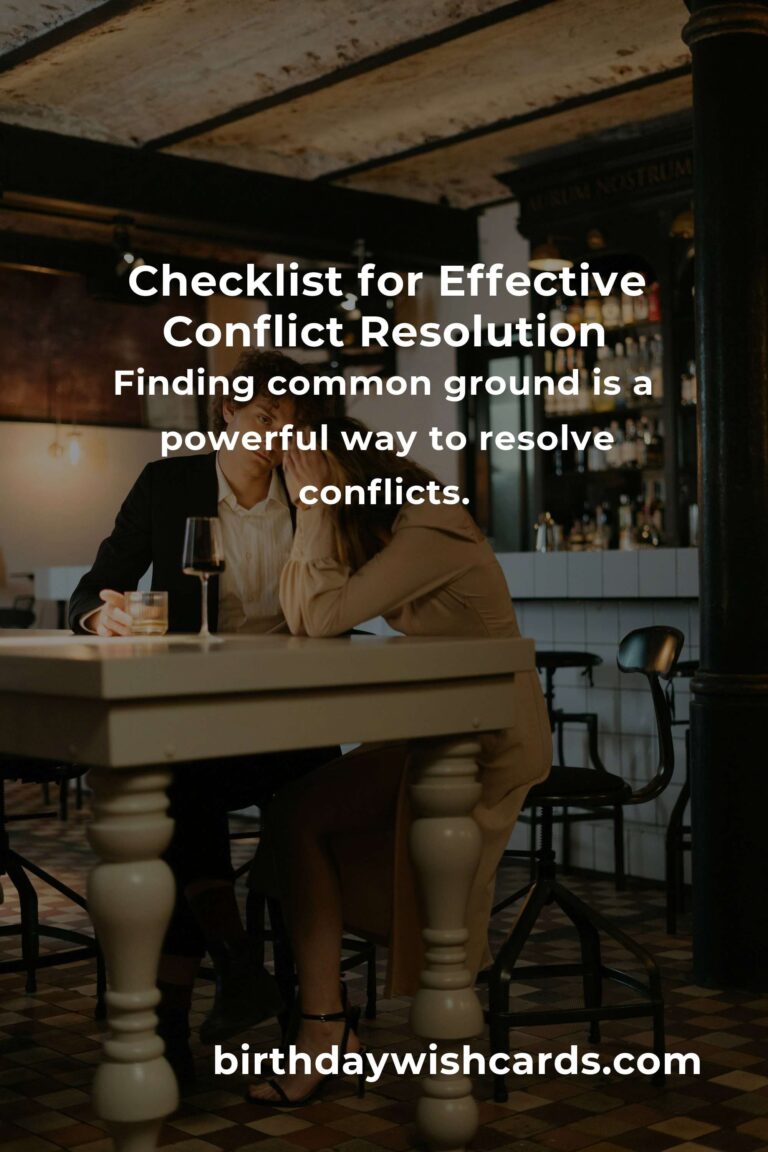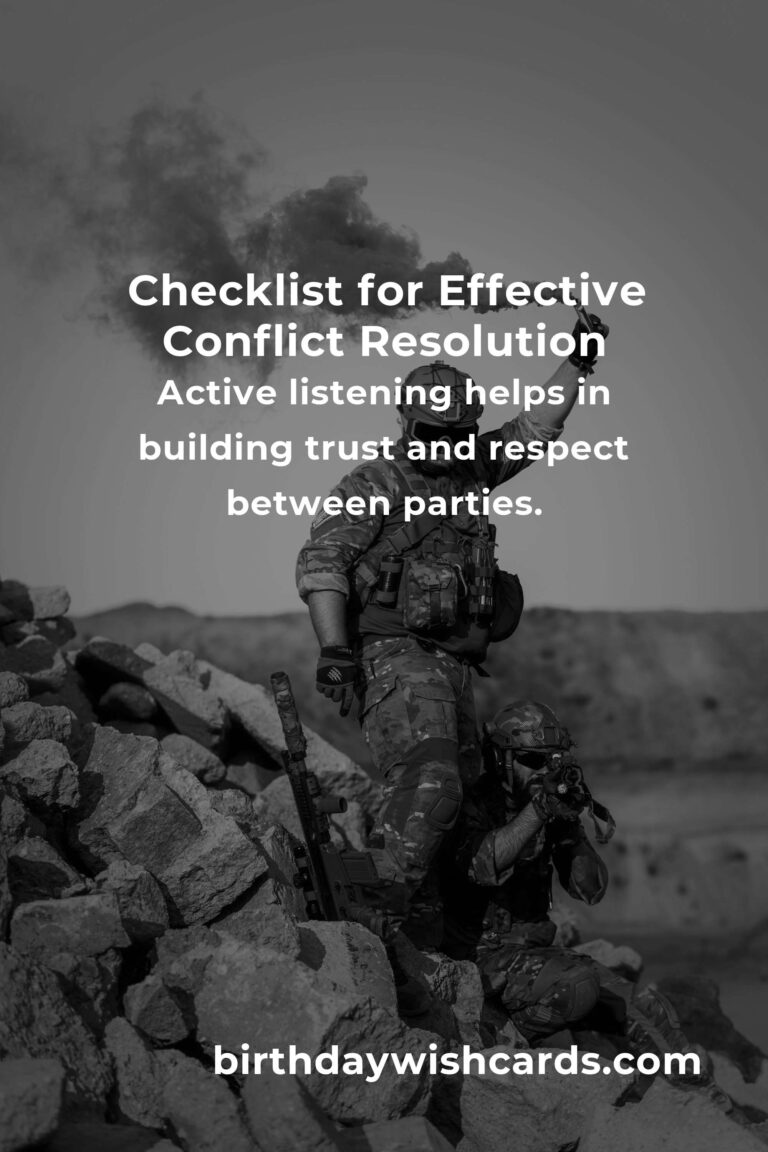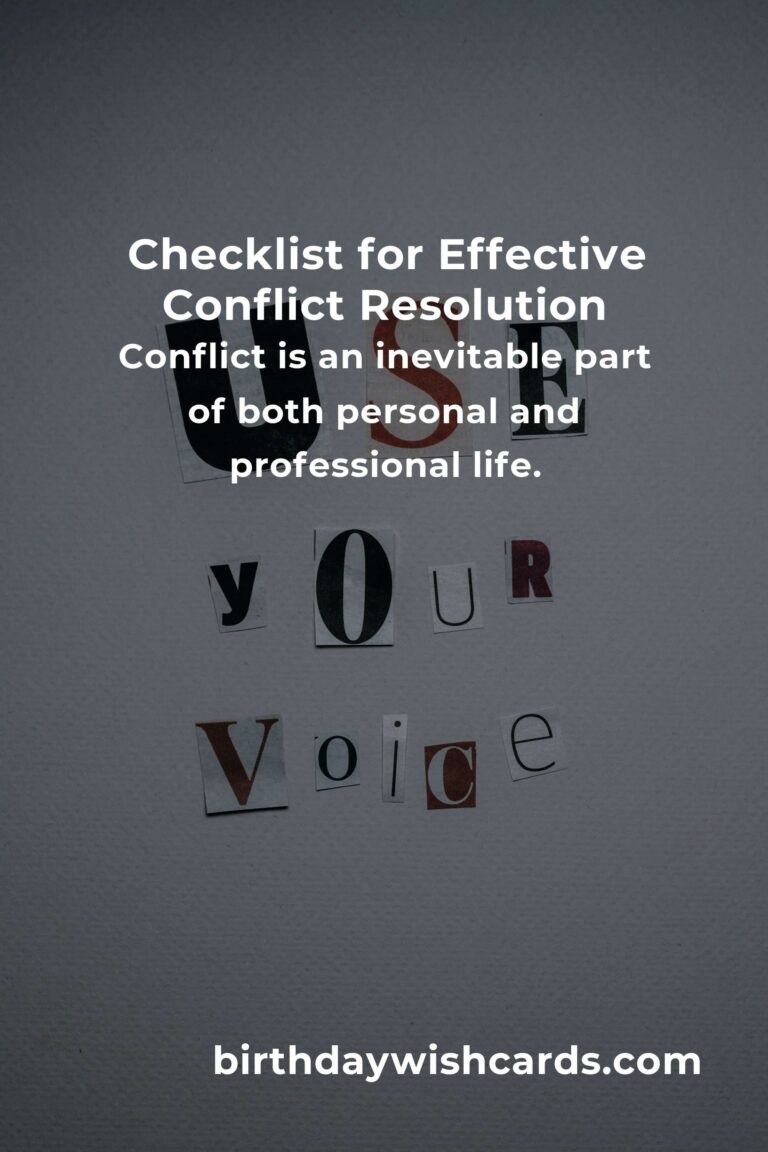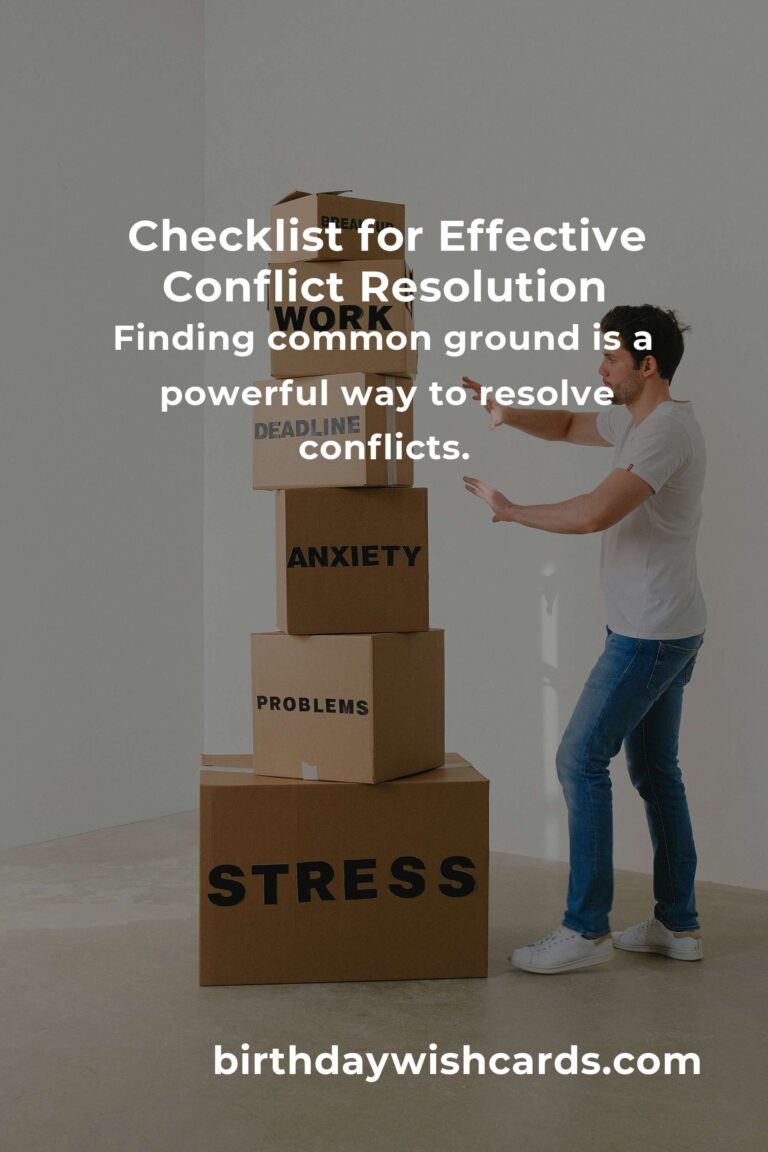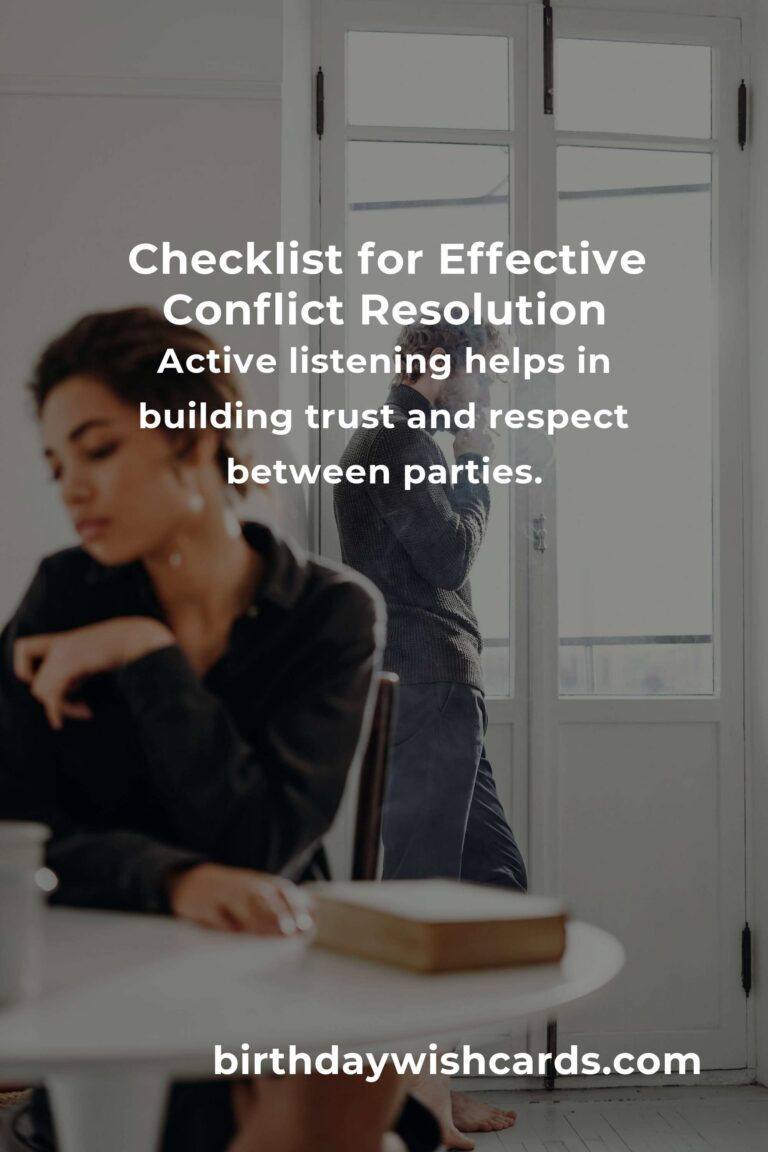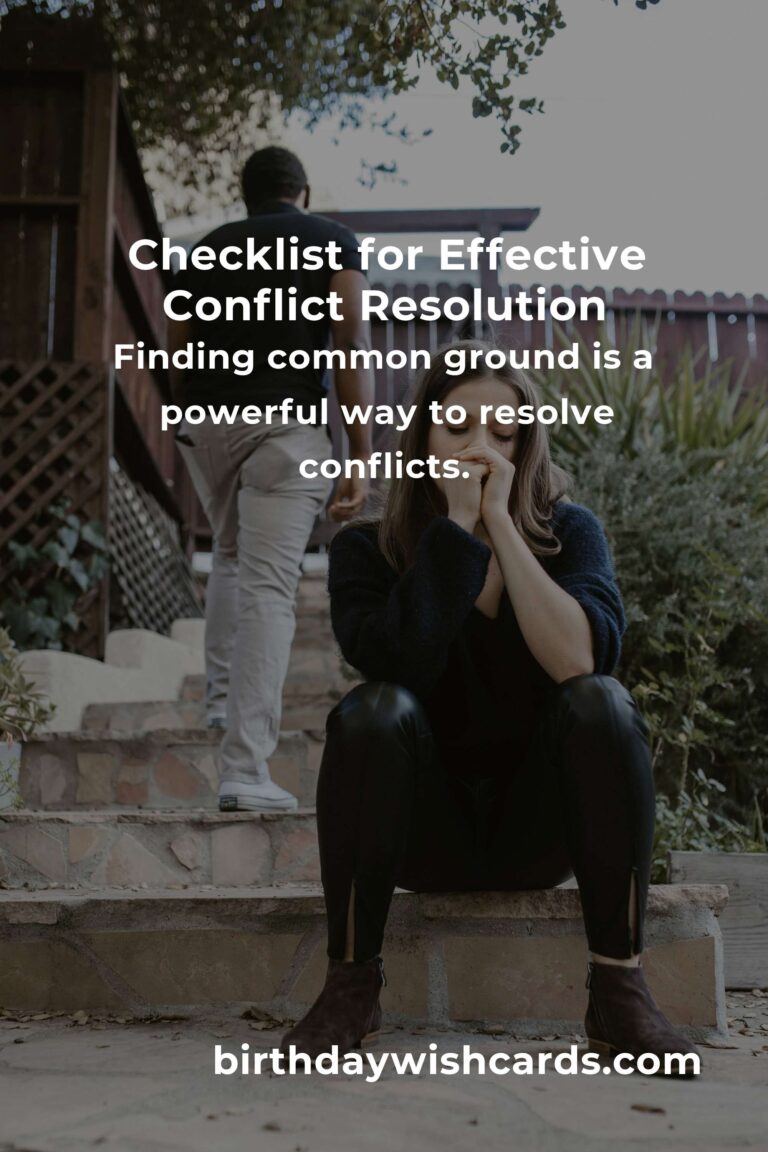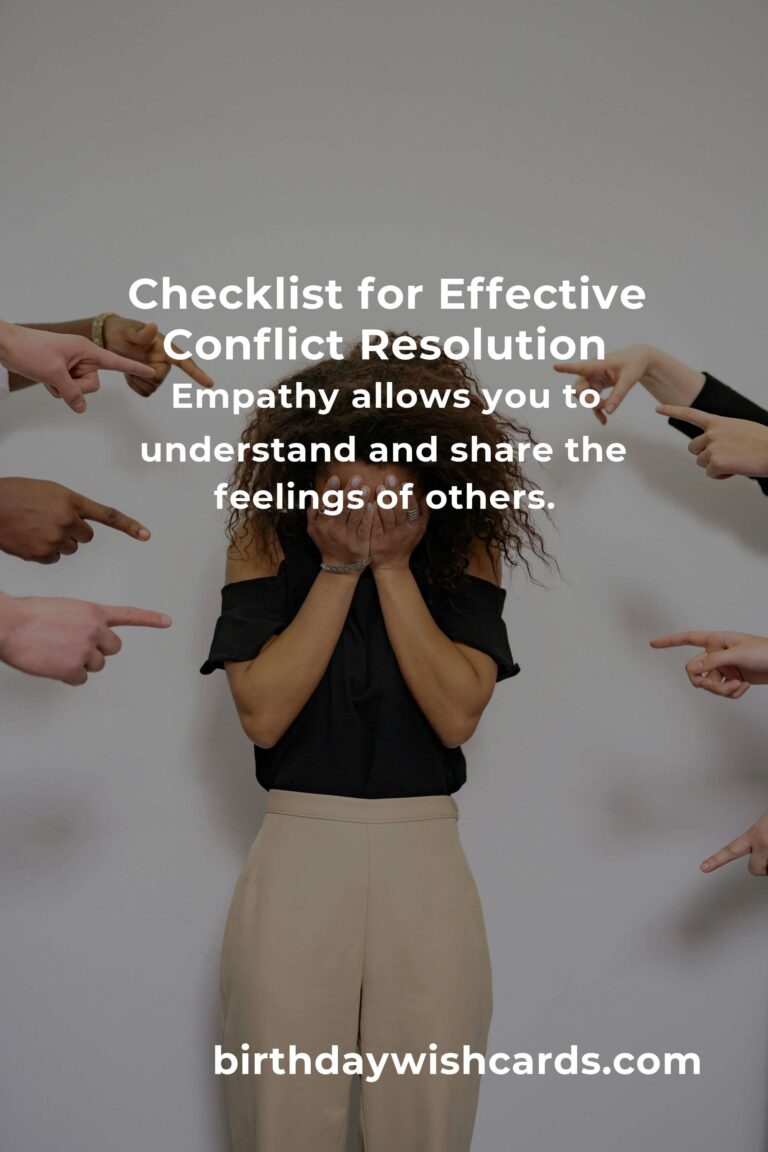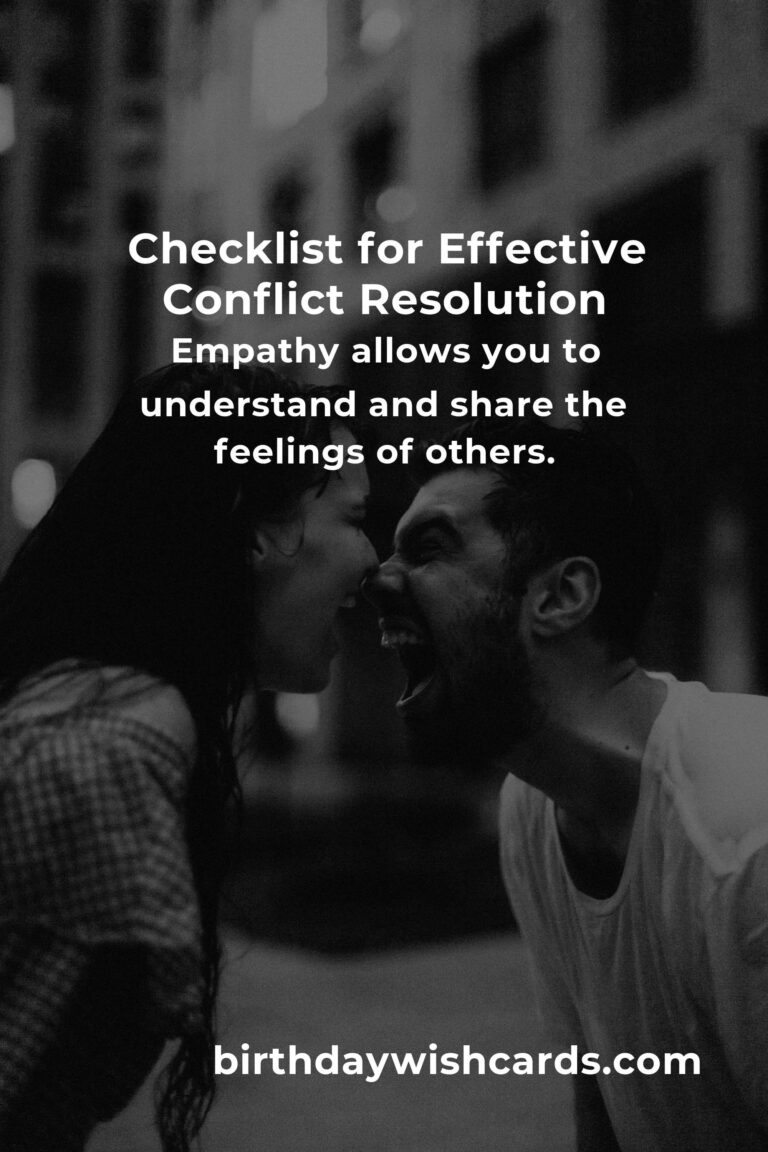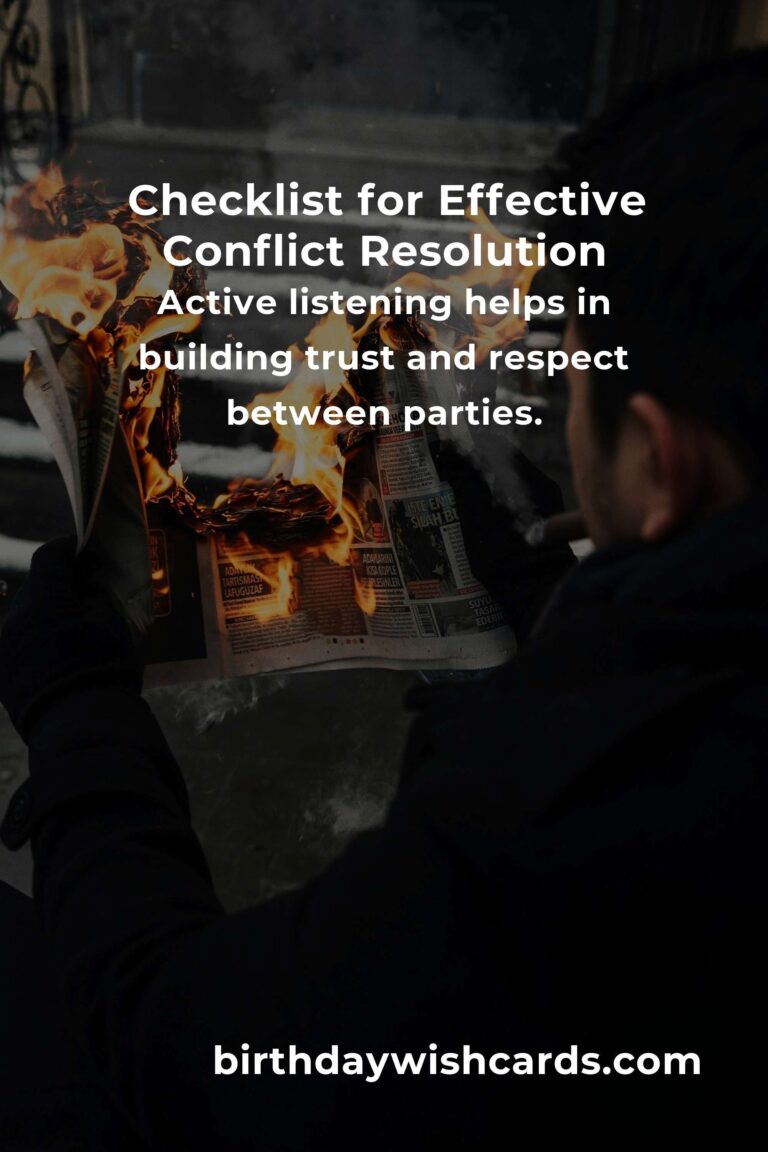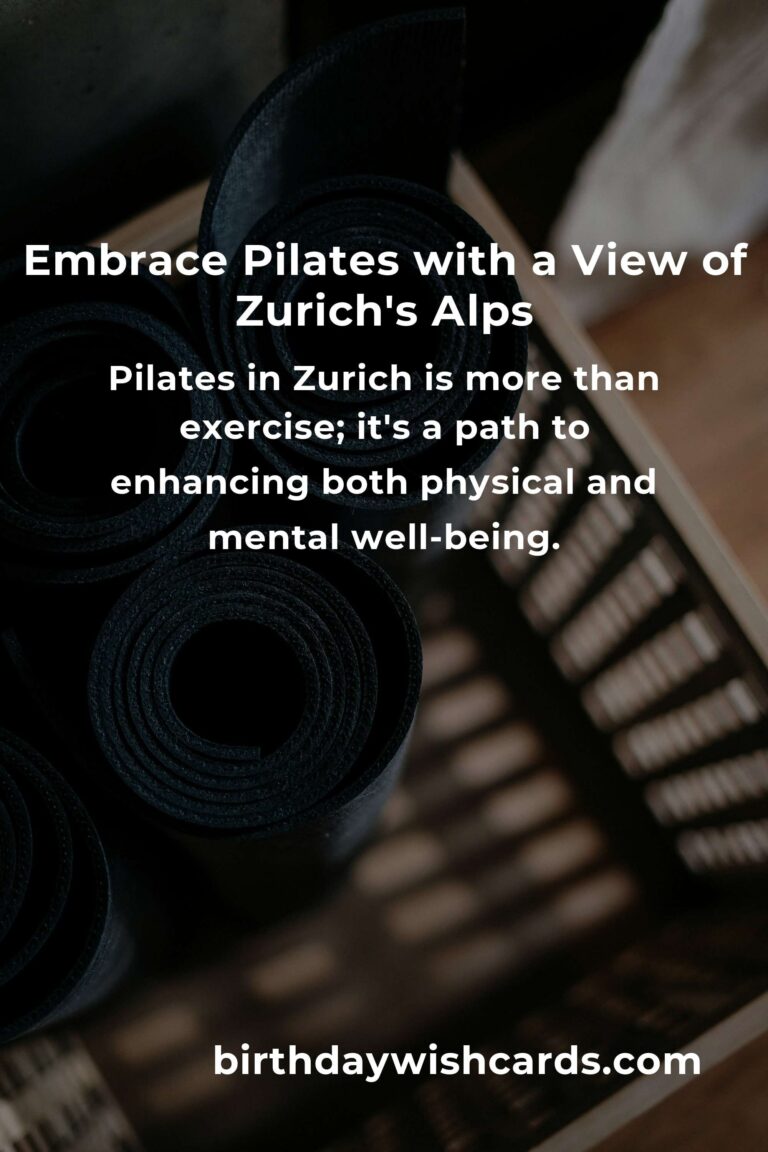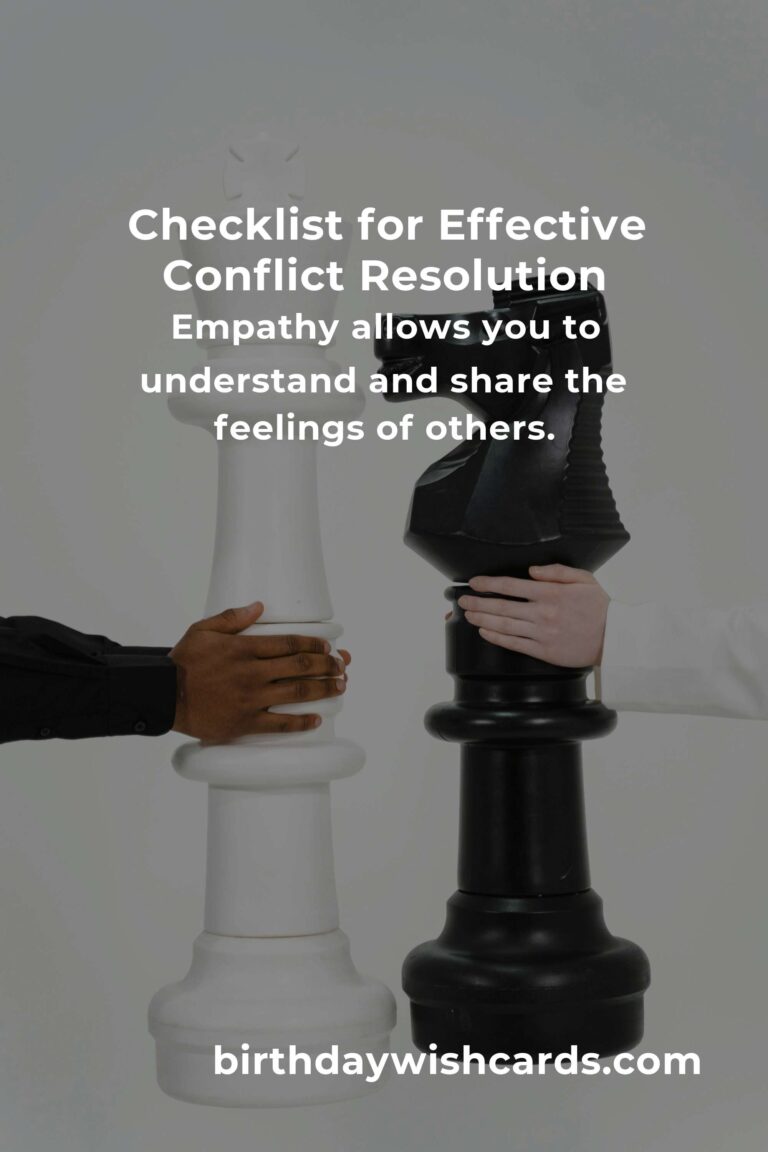
Conflict is an inevitable part of both personal and professional life. The ability to resolve conflicts effectively can enhance relationships and improve productivity. In this article, we will explore a complete checklist for proven conflict resolution techniques that you can apply in various situations.
Understanding the Nature of Conflict
Before diving into conflict resolution strategies, it’s essential to understand what conflict is. Conflict arises from differences in values, motivations, perceptions, ideas, or desires. Understanding the root cause of a conflict is crucial for effective resolution.
The Importance of Communication
Communication is the cornerstone of conflict resolution. Effective communicators can express their ideas clearly and listen to others to understand their perspectives. To ensure open communication, create an environment where all parties feel heard and valued.
Active Listening
Active listening involves paying full attention to the speaker, understanding their message, responding appropriately, and remembering key points. This technique helps in building trust and respect between parties, which is essential for resolving conflicts.
Establishing Common Goals
Finding common ground is a powerful way to resolve conflicts. By identifying shared goals or interests, parties can work collaboratively towards a win-win solution. This can help diffuse tension and facilitate a more productive dialogue.
Setting Clear Boundaries
Establishing boundaries is crucial in conflict resolution. It involves defining what is acceptable and what is not, which can prevent misunderstandings and further conflicts. Clear boundaries help maintain respect and professionalism in discussions.
The Role of Empathy
Empathy allows you to understand and share the feelings of others. When resolving conflicts, showing empathy can bridge gaps in understanding and foster a spirit of cooperation. It encourages openness and reduces defensiveness.
Problem-Solving Approach
Adopting a problem-solving mindset can lead to constructive conflict resolution. This involves identifying the problem, brainstorming possible solutions, evaluating options, and implementing the best solution. A structured approach can help in reaching a satisfactory resolution for all parties involved.
Seeking Mediation
In some cases, bringing in a neutral third party can be beneficial. A mediator can facilitate communication, provide an unbiased perspective, and help guide parties toward a resolution. Mediation can be particularly useful in complex or highly emotional conflicts.
Follow-Up and Evaluation
After a conflict has been resolved, it’s important to evaluate the outcomes and follow up with the parties involved. This helps ensure that the resolution is effective and sustainable. It also provides an opportunity to learn and improve conflict resolution skills for future situations.
Conclusion
Effective conflict resolution is a skill that can be developed with practice. By following this checklist, you can approach conflicts with confidence and work towards positive outcomes. Remember that the goal is not just to resolve the conflict, but to strengthen relationships and foster a collaborative environment.
Conflict is an inevitable part of both personal and professional life. Effective communication is the cornerstone of conflict resolution. Active listening helps in building trust and respect between parties. Finding common ground is a powerful way to resolve conflicts. Empathy allows you to understand and share the feelings of others.
#ConflictResolution #Communication #ActiveListening #Empathy #ProblemSolving


